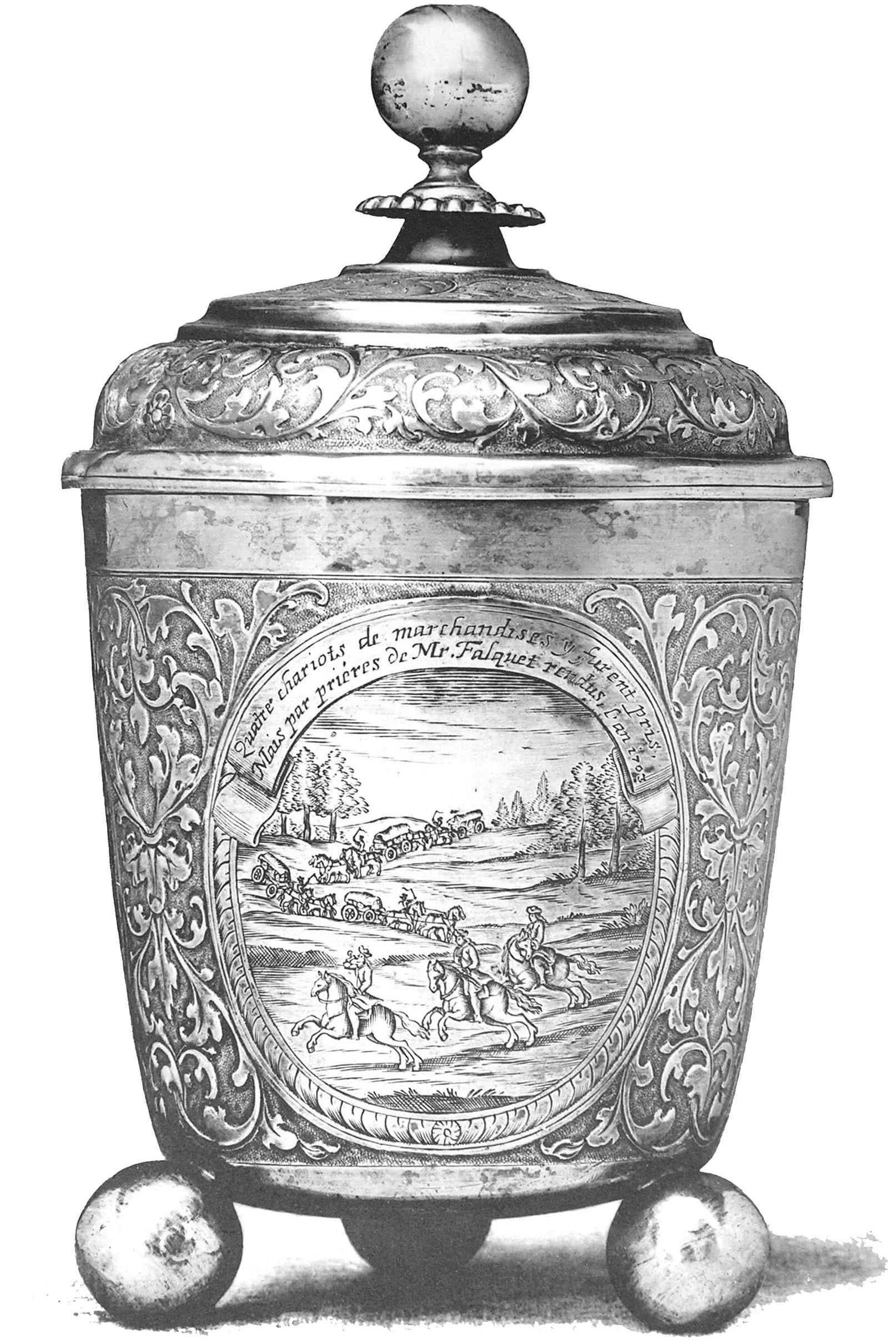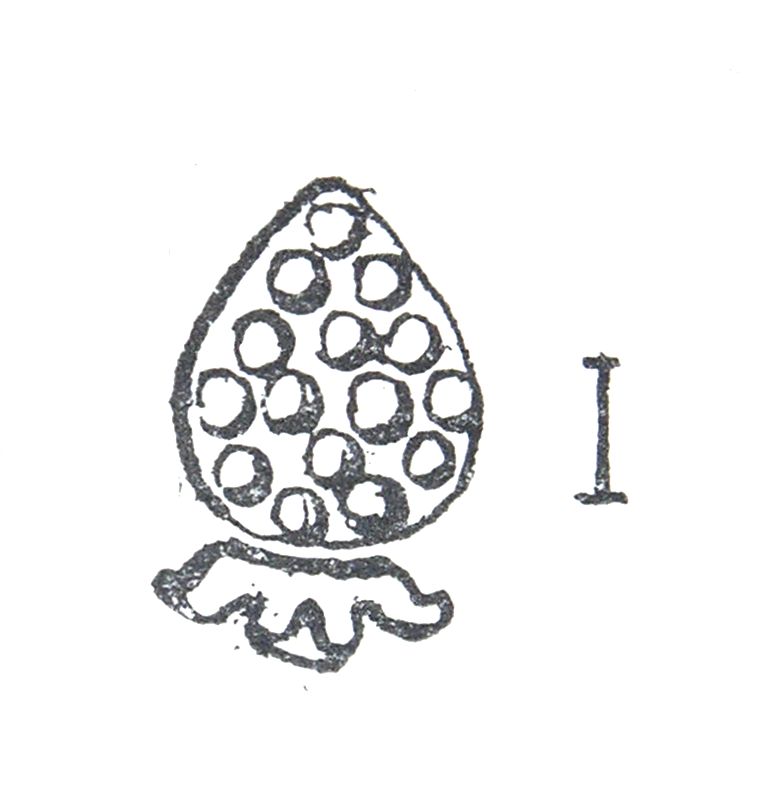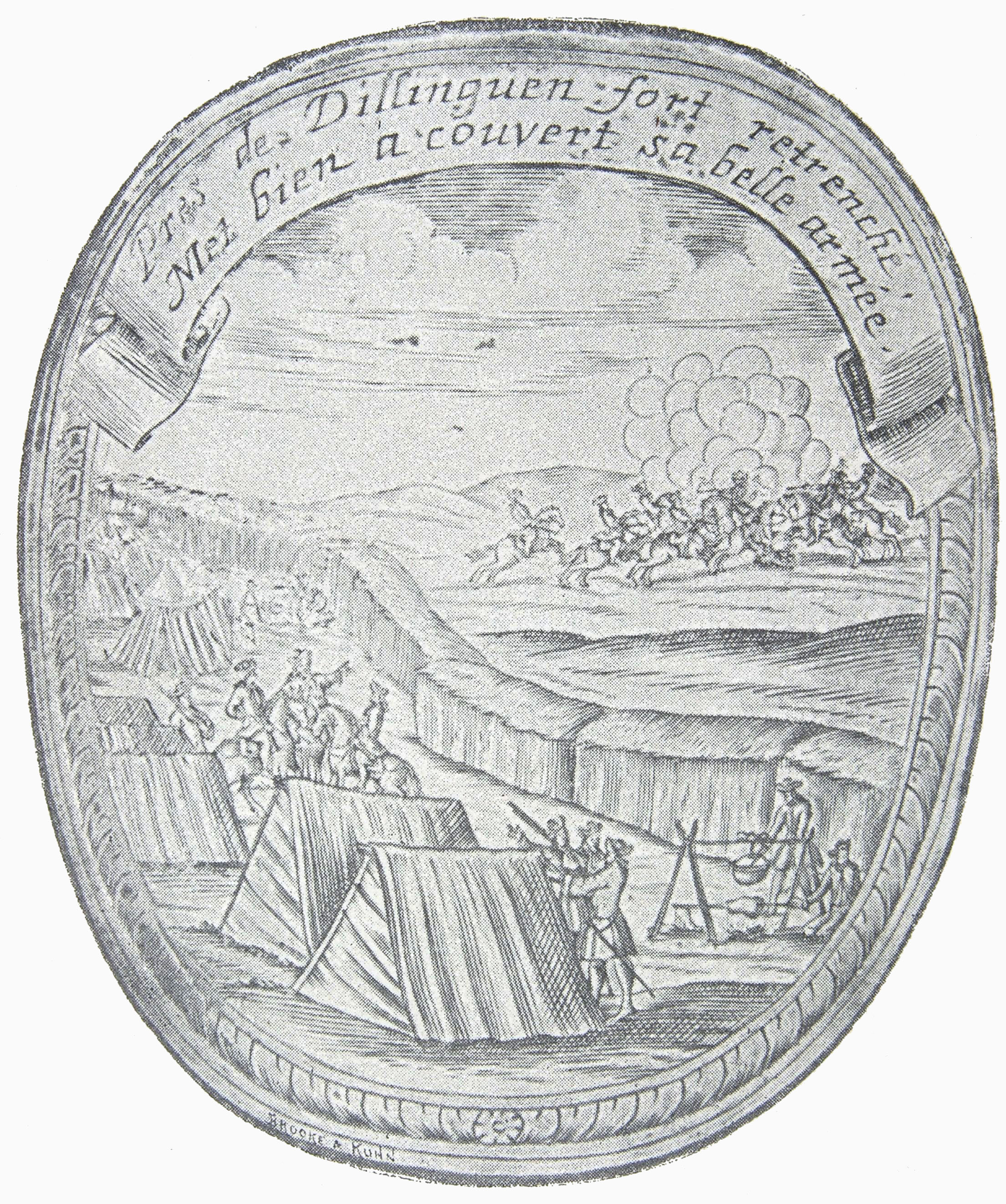Gobelet André Falquet on:
[Wikipedia]
[Google]
[Amazon]
 The Gobelet André Falquet is a
The Gobelet André Falquet is a
 ,
,  ,
, 
 The Gobelet is an award of recognition to the Geneva citizen and later nobleman André Falquet. It was awarded to him by the city of Augsburg in 1703 during the turmoil of the War of the Spanish Succession. The reason for this was a petition by André Falquet - who spoke
The Gobelet is an award of recognition to the Geneva citizen and later nobleman André Falquet. It was awarded to him by the city of Augsburg in 1703 during the turmoil of the War of the Spanish Succession. The reason for this was a petition by André Falquet - who spoke  The cup was donated by the people of Geneva to the people of Vaud in 1815.ville-ge.ch - Compte-rendu de l'administration municipale de la Ville de Geneve pendant l'année 1899, Présenté au Conseil Municipal par le Conseil Administratif en Mai 1900. Imprimerie W.Kündig & fils. 1900, Seite 241, 243.
The cup was donated by the people of Geneva to the people of Vaud in 1815.ville-ge.ch - Compte-rendu de l'administration municipale de la Ville de Geneve pendant l'année 1899, Présenté au Conseil Municipal par le Conseil Administratif en Mai 1900. Imprimerie W.Kündig & fils. 1900, Seite 241, 243.
In November 1894, it was acquired by the Musée Fol in Geneva with the help of a special donation (French ''souscription particulière'') before being transferred from the Musée Fol to the Musées d'Art et d'Histoire in 1899.
 The Gobelet André Falquet is a
The Gobelet André Falquet is a silver-gilt
Silver-gilt or gilded/gilt silver, sometimes known in American English by the French language, French term vermeil, is silver (either pure or sterling silver, sterling) which has been gilding, gilded. Most large objects made in goldsmithing tha ...
cup with cover made in the 18th century by Hans-Matthias Rehm of Augsburg for the Swiss merchant André Falquet, which is kept in the Maison Tavel (''Musées d'Art et d'Histoire Genève'') in Geneva under inventory number G 834.
In French it is a ''gobelet''; the English derivative goblet
A chalice (from Latin 'cup', taken from the Ancient Greek () 'cup') is a drinking cup raised on a stem with a foot or base. Although it is a technical archaeological term, in modern parlance the word is now used almost exclusively for the ...
now implies a cup
A cup is an open-top vessel (container) used to hold liquids for drinking, typically with a flattened hemispherical shape, and often with a capacity of about . Cups may be made of pottery (including porcelain), glass, metal, wood, stone, pol ...
with a stem
Stem or STEM most commonly refers to:
* Plant stem, a structural axis of a vascular plant
* Stem group
* Science, technology, engineering, and mathematics
Stem or STEM can also refer to:
Language and writing
* Word stem, part of a word respon ...
(like most chalice
A chalice (from Latin 'cup', taken from the Ancient Greek () 'cup') is a drinking cup raised on a stem with a foot or base. Although it is a technical archaeological term, in modern parlance the word is now used almost exclusively for the ...
s or wineglass
A wine glass is a type of glass that is used for drinking or tasting wine. Most wine glasses are stemware (goblets), composed of three parts: the bowl, stem, and foot. There are a wide variety of slightly different shapes and sizes, some consid ...
es).
Description
The diameter at the top is 12 centimetres, and the cup stands on three soldered balls that raise the cup by about two centimetres. The outside of the cup is decorated with engravings. These are beautifully drawn and elaborate arabesque ornaments. Three oval medallions show different subjects and are captioned to the story below. Further text and two coats of arms are found on the underside of the cup; they are those of André Falquet and the city ofAugsburg
Augsburg ( , ; ; ) is a city in the Bavaria, Bavarian part of Swabia, Germany, around west of the Bavarian capital Munich. It is a College town, university town and the regional seat of the Swabia (administrative region), Swabia with a well ...
. A lid completes the piece. It consists of an undecorated closing rim and a quarter-round decorated rim; separated by an almost flat intermediate piece, a cone with a little crown and a sphere at the top rises from it. The cup is made of gilded silver. Except for the feet and the medallions, the gilding is complete. The total height of the cup is 22 centimetres and it weighs 552 grams.Mayor, J ques L'Ancienne Genève - L'Art et les Monuments. Ch. Eggimann & Cie., Genève, 1896. Seiten 52–60.
{, cellpadding="2"
,  ,
,  ,
, 
History
 The Gobelet is an award of recognition to the Geneva citizen and later nobleman André Falquet. It was awarded to him by the city of Augsburg in 1703 during the turmoil of the War of the Spanish Succession. The reason for this was a petition by André Falquet - who spoke
The Gobelet is an award of recognition to the Geneva citizen and later nobleman André Falquet. It was awarded to him by the city of Augsburg in 1703 during the turmoil of the War of the Spanish Succession. The reason for this was a petition by André Falquet - who spoke French
French may refer to:
* Something of, from, or related to France
** French language, which originated in France
** French people, a nation and ethnic group
** French cuisine, cooking traditions and practices
Arts and media
* The French (band), ...
- to Marshal Claude-Louis-Hector de Villars, who was commanding the French troops in Bavaria
Bavaria, officially the Free State of Bavaria, is a States of Germany, state in the southeast of Germany. With an area of , it is the list of German states by area, largest German state by land area, comprising approximately 1/5 of the total l ...
at the time. André Falquet's mission was to redeem four richly laden wagons of merchandise confiscated by the (French) commander of Bavaria in Donauwörth. These had been on their way from Nuremberg to Augsburg without valid freight documents. André Falquet succeeded in doing so and was honoured by the citizens of Augsburg with the Gobelet.
The recipient of the art object, André Falquet, was a merchant in Geneva. He was born in 1687 and died in 1755. He was ennobled by Charles VI in 1725 for supplying goods important to the war effort to the imperial army in the War of the Spanish Succession.
 The cup was donated by the people of Geneva to the people of Vaud in 1815.ville-ge.ch - Compte-rendu de l'administration municipale de la Ville de Geneve pendant l'année 1899, Présenté au Conseil Municipal par le Conseil Administratif en Mai 1900. Imprimerie W.Kündig & fils. 1900, Seite 241, 243.
The cup was donated by the people of Geneva to the people of Vaud in 1815.ville-ge.ch - Compte-rendu de l'administration municipale de la Ville de Geneve pendant l'année 1899, Présenté au Conseil Municipal par le Conseil Administratif en Mai 1900. Imprimerie W.Kündig & fils. 1900, Seite 241, 243.In November 1894, it was acquired by the Musée Fol in Geneva with the help of a special donation (French ''souscription particulière'') before being transferred from the Musée Fol to the Musées d'Art et d'Histoire in 1899.
Creator
The artist who created this art object was called Jean-Mathieu Rehm (or Hans-Matthias Rehm) and came fromAugsburg
Augsburg ( , ; ; ) is a city in the Bavaria, Bavarian part of Swabia, Germany, around west of the Bavarian capital Munich. It is a College town, university town and the regional seat of the Swabia (administrative region), Swabia with a well ...
. An analogue of the Gobelet André Falquet was still on display at the National Museum in Budapest
Budapest is the Capital city, capital and List of cities and towns of Hungary, most populous city of Hungary. It is the List of cities in the European Union by population within city limits, tenth-largest city in the European Union by popul ...
at the beginning of the 20th century.
Literature
* Haller, J.; Brügger, S.: ''Adelsbrief André Falquet – Aspekte einer kaiserlichen Urkunde von 1725''. Aarau, 2007.References